
|
Olympus E-620 Image Samples — Full ISO Range |

|
My other articles related to the |
|
For this camera, I decided to re-shoot the same subjects as the ones used in a similar comparison for the E-30 from six months earlier, and under similar (if not quite identical) conditions. I was quite happy with that comparison, from which I was able to learn quite a lot about the E-30 imaging; I hope this will be the case here as well. Introducing the subjects My three subjects differ in color, texture, and tonality, each providing a different angle to the comparison, as I will explain when below. All pictures were taken in diffused daylight from a patio door facing away from the sun; the sky was always clear and I think I was able to avoid any undesired variation in the light. White balance was set by reference (off a sheet of white paper), which I found a very accurate method in previous Olympus cameras. The light and focus were set before every frame, with matrix metering and central-point AF, respectively. To avoid (or, at least, greatly reduce) the effect of the lens used, all pictures were taken with the 50 mm F/2 Macro ZD (which is like Caesar's wife, beyond any suspicion). Any loss of sharpness may be due only to my errors in the proper target alignment. Let me now show the full, size-reduced frames for the sake of reference; for each series just one ISO, with the red boxes showing the locations of 1:1 samples presented in the table that follows. I am also providing links to the original image files (in-camera 1:2.7 JPEGs); each is about 8 MB in size. (For ISO 3200, also full frames processed with Neat Image have been included, denoted as 'NI' in the links. |
| Series 1: My belt buckle. | |
|
This subject is almost monochrome, with quite a lot of contrast and small but deep shadow areas. The surfaces mostly lack textures which the camera could confuse with noise and therefore try to remove. Note that the buckle is bent; the left- and rightmost areas may be outside of the depth of field zone (with the focusing done in the center). Parameters: F/8.0, exposure compensation -0.3 EV, Natural Picture Mode: sharpness and contrast at -1, NF at Low. Shutter speeds started from 1/3 s at ISO 100, progressing geometrically up to ISO 800; at ISO 1600 the exposure was 1/3 EV longer than expected (1/40 s instead of 1/50 s), halving to 1/80 s at ISO 3200. This is just a play of rounding errors, not an inconsistency of ISO settings, as we will see below. |
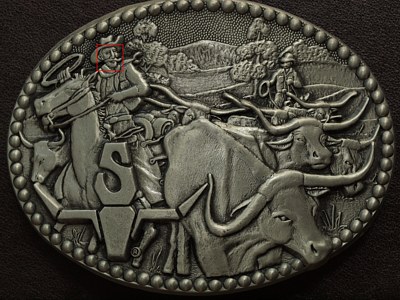
|
| Series 2: Old money. | |
|
A two-dimensional subject with lost of detail but no shadows. The black ink on the bank note forma some irregular edges and has some texture to it. Pastel colors can be tricky.
Parameters: Aperture at F/6.3, no exposure compensation, Natural Picture mode with no adjustments, NF at Low. Shutter speeds started at 1/10 s, halving in each next frame as expected, except that at ISO 3200 was 1/200 s (not 1/160 s). This contradicts the hypothesis about ISO inconsistency. |
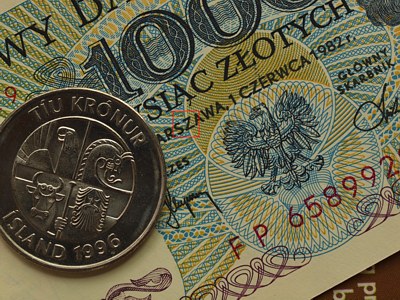
|
| Series 3: Amish candy. | |
|
A tricky subject, with a texture which the noise filter may confuse with noise and remove (I've seen this happen with cameras praised for "low noise levels"). Then, there are some gradient shadow areas out of focus: an opportunity for noise artifacts to show. At the same time, there are also sharp, contrasty edges. The 1:1 crop area has been selected to show all these aspects.
Parameters: F/8, exposure compensation -0.3 EV. Natural Picture mode with no adjustments, noise filtering at Low. Shutter speed started at 1.3 s, progressing as expected in the whole range of ISOs. This exposure is typical to situations call for higher ISOs: ISO 3200 brings the shutter speed to an almost-handholdable level (once I have to use a tripod, I may as well stay at ISO 100). |
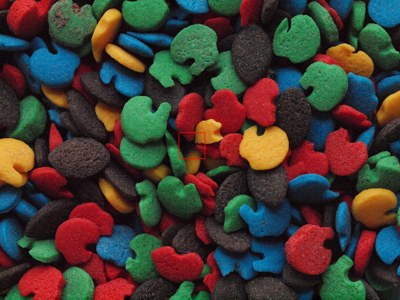
|
|
Samples: ISO 100 to 3200 Now the fun begins: a table with the full-scale fragments at various ISO settings. (LCD monitor users: watch your viewing angle!) | |

|
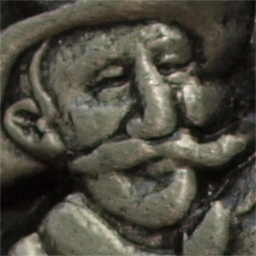
|
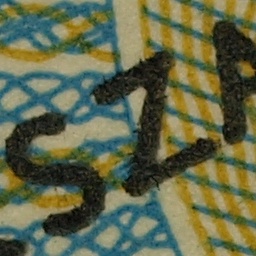
|
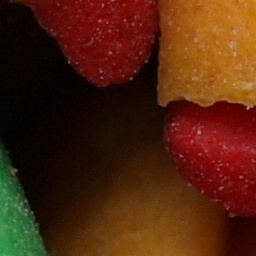
|
|---|---|---|---|

|
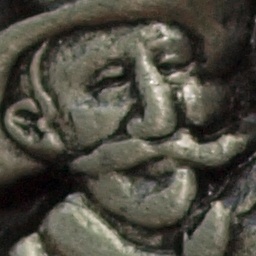
|
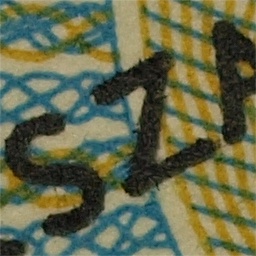
|

|

|
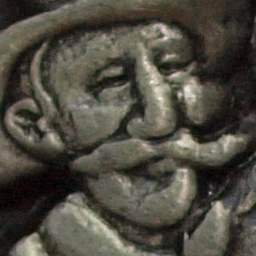
|
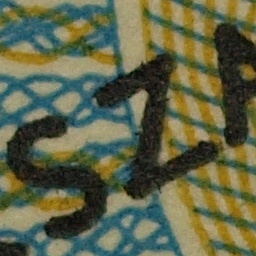
|
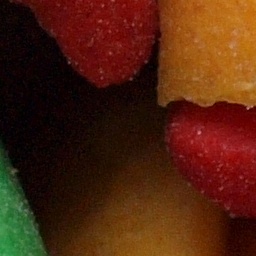
|

|
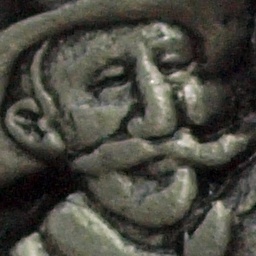
|
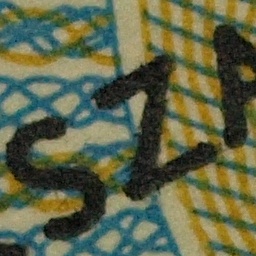
|
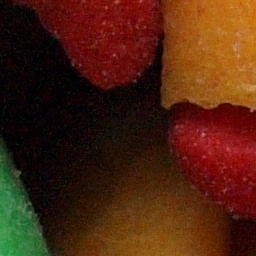
|

|
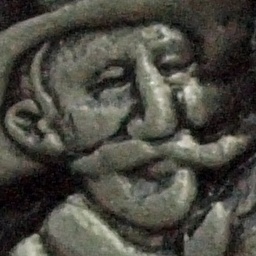
|
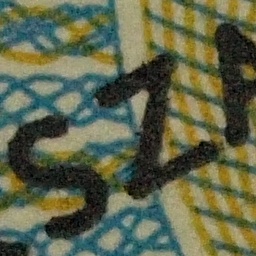
|
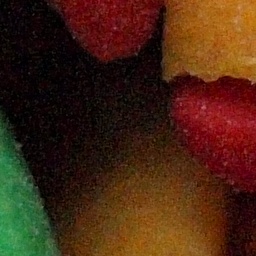
|

|
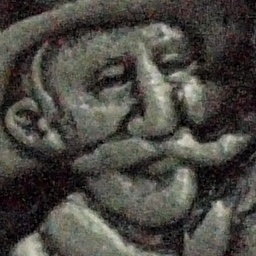
|

|
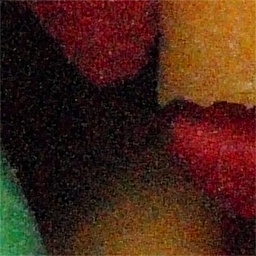
|
|
For comparison, the last three samples denoised with Neat Image: | |||

|
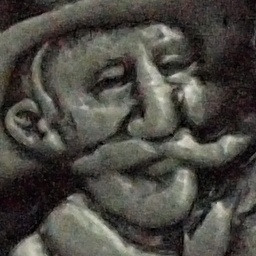
|
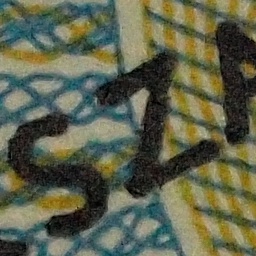
|
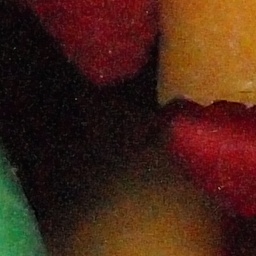
|
|
As I expected, the candy series is a tough cookie, while the money scene is easiest to handle at higher ISOs, for reasons which should already be clear. ISO 100 is beautiful for all subjects, but all sensitivities up to ISO 800 look good enough for practically any use. Even the candy shadows at that last setting remind me of grain in well-behaved film. Above ISO 800 things are not so peachy. First, the black level goes up, but that's not really a problem: it can be lowered in postprocessing. Then, we have higher noise amplitude. At ISO 1600 I could easily live with it, if not for the non-uniformity which starts showing up. Again, this is not obvious in the other two subjects, but see the shadow gradient at the bottom piece of yellow candy: while it is still reasonably gradual at ISO 800, at the next setting it starts showing blotches. At ISO 3200 this is additionally accompanied by a generous sprinkle of high-amplitude spikes. Note, however, that some spots which look like noise spikes in the candy picture are not actually noise, but small crystals of (I hope) sugar: you can see them at all other ISOs as well. To put things into perspective, remember than the 1:1 samples show how the image would look on a huge print, probably (depending on your monitor DPI) 80×107 cm, which should be viewed from a 1.2 m (4 ft) distance or so. Try to get a presentable print of this size from a 35-mm film frame, and only then complain about noise. The detail is holding well up to ISO 1600, and so are the colors. I wouldn't be afraid to use this sensor gain occasionally, not just in emergencies. Now, at ISO 3200 things may depend on the subject: for some pictures this speed may be quite usable, for others less so. The main problem may be in large areas devoid of any detail — in those I could detect some noise artifacts (blotching, slight banding) already at ISO 200 — see my white lily sample elsewhere. By the way, I couldn't see any noise banding in the images shown here — but, again, this does not rather show in busy subjects. The Neat Image Last but not least, how does Neat Image, a noise removal application I've learned to trust and depend on, handle the noise at ISO 3200? Well, this largely depends on the operator's skills, taste, and/or whims. I've performed the operation with use of the auto-profiling function, and then applied the profile in a rather conservative fashion in the first two images, and more aggressively for the candy. (In the money picture I didn't want to lose the subtle texture of the paper; this would be too much!) It turns out that Neat Image does, indeed, help with noise, at a reasonable expense of smoothing out some fine texture detail. ISO 3200 images become almost presentable. It would be interesting also to compare this against more aggressive in-camera filtering; one of the next things to do. As compared to... As compared to the E-510, this camera introduces some improvement: while retaining the same, impressive amount of detail, it visibly improves the noise characteristics at ISO 800 and above (I don't see much difference below that); now ISO 3200 is as usable as ISO 1600 was, or, maybe, even a bit better. Now, a tougher task: comparing the E-620 against its bigger, but barely older brother, the E-30. While just having a look at the similar E-30 samples will give you some idea, a better comparison can be made by flipping between corresponding samples in a full-screen image browser, and that's what I did. Based on these three subjects, the results are quite surprising: at the same (nominal) sharpness and NF settings the E-30 seems to have a slight edge at ISO 100 and 200 (more detail, cleaner noise pattern, especially at ISO 200), but at ISOs of 800 and beyond I like the E-620 more,if just slightly: the noise amplitude may be (just) a tad higher, but there is less detail loss due to filtering. (A downside is some occasional color artifact; I can see faint reddish blotches in the buckle image. Well, you cannot have it all!) Closing remarks Going through this exercise, as time-consuming as it was, turned out to be a good educational experience; it also gave me some idea on how good the imaging engine in the E-620 actually is. What still remains to be done, though, is tweaking the camera, especially sharpening and noise filter, to my liking, to get most advantage of it. That's another project to come. |
|
Olympus® is a registered trademark of Olympus Corporation.
This page is not sponsored or endorsed by Olympus (or anyone else) and presents solely the views of the author. |
| Home: wrotniak.net | Search this site | Change font size |
| Posted 2009/06/28 | Copyright © 2009 by J. Andrzej Wrotniak |